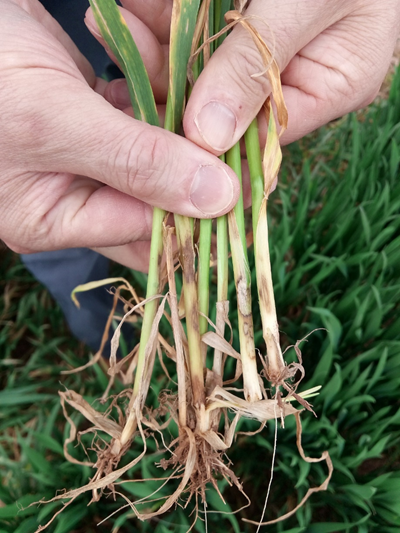Stem base diseases hit yields in 2019
12 October 2019The SRUC crop clinic has been kept busy this season with stem base disease cases in wheat and barley. Some of these have come in from fields with high levels of lodging and others from sites where yield have been unexpectedly low. Common eyespot, fusarium and sharp eyespot levels have all been high, as have levels of take-all.
To some extent, this is predictable as the previous winter was relatively mild, with plenty of moisture and these are conditions which allow for early crop growth and let the diseases to thrive. It is always worth checking out the stem base and roots where grain fill is poor so that future plans can be adjusted. Obviously stretching rotations between cereal crops would help but can be impractical to reach the two-year break needed to reduce eyespot risk. Delayed drilling is another approach and is sensible in second wheats particularly at risk. The recurring presence of eyespot in a field adds to the case for using SDHIs at stem extension in the spring treatment options as this can boost the efficacy of azoles like prothioconazole against eyespot.
Fiona Burnett SRUC, for the Farm Advisory Service.
Sign up to the FAS newsletter
Receive updates on news, events and publications from Scotland’s Farm Advisory Service

